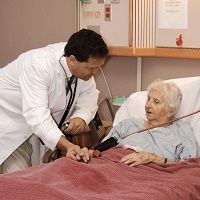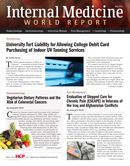Carbon Dioxide Laser Treatment Beneficial for Posttraumatic, Lower-extremity Ulcers
In elderly patients who experience chronic, post-traumatic, lower-extremity ulcers, fractional carbon dioxide laser treatment was found to accelerate wound healing.

In elderly patients who experience chronic, post-traumatic, lower-extremity ulcers, fractional carbon dioxide laser treatment was found to accelerate wound healing.
In a case study published in JAMA Dermatology, Tania J. Phillips, MD, FRCPC and her colleagues documented the healing process of three elderly patients’ wounds that were treated with Deep FX fractional carbon dioxide lasers. The authors mentioned these individuals were of good health, without significant comorbidities, and that their wounds were post-traumatic.
Case #1: A 70-year-old woman with an open wound on the left foot from a de-gloving motor vehicle crash. The wound, which was present for 3 months prior to the study’s inclusion, was 3.0 × 1.7-cm (5.78 cm2) in size. While she kept her leg elevated, used multilayer compression bandages, and put on non-adherent dressings every day, the wound didn’t heal. A week after undergoing the Deep FX fractional carbon dioxide laser therapy, the gash shrunk to 3.0 × 1.0 cm. After 2 and a half weeks, the wound continued to decrease to 2.0 × 1.0 cm and was completely healed after 6 weeks.
Case #2: A man in his 70’s with non-melanoma skin cancers and type 2 diabetes had a wound size measuring 1.5 × 1.5 cm (2.25 cm2) on his right shin from undergoing Mohs surgery for basal cell carcinoma. Due to 6 weeks minimal healing, the patient underwent Deep FX fractional carbon dioxide laser treatment, and 3 weeks later the wound completely healed.
Case #3: A woman in her 90s who had a wound on her right shin sized 2.2 × 2.2 cm (4.84 cm2) also from Mohs surgery for basal cell carcinoma. Even though after surgery, the wound developed an infection, which was treated with 500mg of oral cephalexin, taken 4 times daily for 10 days and multilayer compression wraps and hydrofiber silver dressings, the wound was still slow to heal. Seven weeks after surgery, Deep FX fractional carbon dioxide laser was used on the wound, which after 1 week of treatment measured 1.8 × 1.6 cm and was healed 3 weeks later.
Since these 3 cases involved healthy elderly people, the team emphasized that these results shouldn’t be expected in patients that have venous, arterial, or chronic diabetic ulcers.
“Fractional carbon dioxide laser treatment appeared to accelerate healing in each of these posttraumatic wounds. It may be a helpful adjunct in non-healing posttraumatic wounds,” they concluded.
